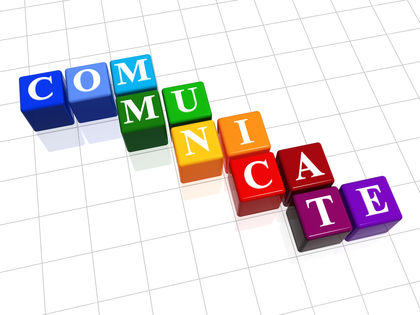How to Communicate Effectively in the Workplace
By Hasan Ahmed
Before You Begin
Success in communication is often attributed to proper planning. The first step is not to deliver your message, but rather to consider the factors which will ensure it is received in a positive light. This involves understanding your audience and selecting the appropriate channel for your message.
Know Your Audience
Before you communicate, consider who you are communicating with and what you want to achieve. What is their role, background, and level of expertise? What are their goals, interests, and concerns? How do they prefer to communicate? By understanding your audience, you can tailor your message and approach to suit their needs and expectations.
Choose the Right Channel
Depending on the situation and the audience, you may need to choose the most appropriate channel for your communication. For example, if you need to discuss a complex or sensitive issue, you may want to use a face-to-face or phone conversation, rather than an email or a text message. If you need to share a large amount of information or data, you may want to use a written document or a presentation, rather than a verbal explanation. Consider the advantages and disadvantages of each channel and how it may affect your communication effectiveness.
Deliberate and Masterful Delivery
Now that you have planned your communication, there are several aspects you should keep in mind to deliver your message in the most effective way possible. Clear and effective delivery is essential for ensuring your message is understood and well-received.
Be Clear and Concise
When you communicate, use simple, clear, and precise language. Avoid jargon, slang, and acronyms that may confuse or alienate your audience. Use short and simple sentences and paragraphs, and organize your information logically and coherently. Use headings, bullet points, and numbers to highlight key points and make your message easier to follow. Be specific and concrete, and avoid vague and ambiguous statements. Provide examples and evidence to support your claims and arguments.
Be Respectful and Professional
When you communicate, be courteous and respectful of your audience. Use appropriate tone and language, and avoid sarcasm, insults, or offensive remarks. Address your audience by their name and title, and use formal or informal greetings and salutations depending on the context and the relationship. Be polite and use words like “please,” “thank you,” and “sorry” when appropriate. Acknowledge and appreciate your audience’s time, effort, and contribution. Be honest and trustworthy, and avoid making promises or commitments that you cannot keep.
Listen Actively and Empathetically
Communication is not only about speaking but also about listening. When you communicate, listen attentively and actively to what the other person is saying. Show interest and engagement by maintaining eye contact, nodding, and using verbal and non-verbal cues. Avoid interrupting, judging, or criticizing the speaker. Ask open-ended questions to clarify, confirm, or explore their message. Paraphrase or summarize what you heard to check your understanding and show that you are listening. Try to understand the speaker’s perspective, feelings, and needs, and express empathy and compassion.
Communicate Assertively
Assertive communication is the ability to express your thoughts, feelings, and needs in a confident, respectful, and honest way, while also respecting the rights and opinions of others. Assertive communication can help you to avoid conflicts, resolve problems, and achieve your goals. To communicate assertively, use “I” statements to express your point of view, such as “I think,” “I feel,” or “I need.” State your needs and expectations clearly and directly, and use words like “will,” “can,” or “want.” Use positive and affirmative language, and avoid words like “but,” “should,” or “have to.” Respect the other person’s point of view, and acknowledge their feelings and needs. Compromise and negotiate when possible, and seek win-win solutions.
The Importance of Following Up
Feedback is an essential part of communication, as it helps you to improve your performance, skills, and relationships. It’s therefore essential to keep in mind that the completion of message delivery is not the end of the process! To be able to adapt, ensure that your team feels valued, and most importantly – to ensure that they understood the message you were intending to convey – it’s important for you to understand what you did well and where you may have fallen short.
Ask for Feedback
Initiate a dialogue by asking your team for feedback on whether they understood the message. Make sure you take the time to answer any questions they have. This not only helps in refining your communication but also establishes an increased climate of trust and mutual support. When you consistently seek feedback, you encourage a culture where honest opinions are shared constructively.
Receive Feedback Gracefully
If you’re going to ask for feedback, prepare yourself to receive it! It’s important to be open and receptive; after all, this is data you have solicited. Listen carefully and respectfully—avoid being defensive or argumentative. Thank the person for their input and ask for clarification or examples if needed. Use the feedback to learn and grow, and to make changes or adjustments as necessary.
Give Feedback Effectively
On the other hand, when you are asked to provide feedback to someone else, make sure you do so in a manner that is going to be helpful. Keep your comments focused on the issue, rather than the person, and be specific in your examples. Provide positive feedback to recognize and reinforce what the person did well, and constructive feedback to identify and correct areas for improvement.
Conclusion
Effective communication is a cornerstone of professional success and satisfaction. By understanding your audience, choosing the right channel, and delivering your message clearly and respectfully, you can foster stronger relationships, enhance productivity, and avoid misunderstandings. However, the process doesn’t end with just delivering your message. Engaging in meaningful follow-up, asking for and giving constructive feedback, and remaining open to continuous improvement are crucial steps to ensure that communication remains effective and impactful.
Implementing these strategies will not only improve your individual communication skills but also contribute to a more cohesive and collaborative work environment. Remember, communication is an evolving skill that benefits from regular practice and refinement. For personalized coaching and group training solutions to enhance your communication skills, contact the X5 Management team today. We’re here to help align your leaders and teams to achieve greater success together!
About the Author: Hasan Ahmed, Operations Coordinator, X5 Management
As X5 Management’s first Operations Coordinator, Hasan is introducing new technologies to streamline the company’s 
Unlock exclusive bi-monthly insights and trends by joining our business email list today!




